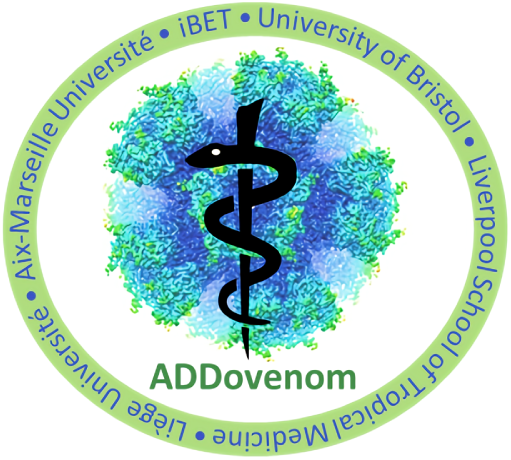For our Researcher Spotlight features, we interview members of the ADDovenom research team, to find out about their interests, their contributions to the project, and their hopes for the future of venom research.
Here, we speak with Thomas Crasset, who is undertaking a Master’s internship at the Mass Spectrometry Laboratory, University of Liège.
Can you tell us briefly about your own research interests and background?
I am a chemist, with a Bachelor’s degree in chemistry from the University of Liège. I am currently doing an Master’s internship at the Mass Spectrometry Lab under the supervision of Prof Loïc Quinton. I have always been interested in applying my knowledge in a way that helps people.
When did you first become interested in venom research?
I did an internship during the third year of my Bachelor’s degree, with ADDovenom colleague Damien Redureau, on different Naja venom, and it was a revelation for me. It taught me the importance of always learning new things, and showed me a good way to apply my knowledge, in order to help people deal with a huge public health problem.
What are your key responsibilities in the ADDovenom project?
As a new member of the ADDovenom team of the University of Liège, I am working on the next generation of antivenomics which will be faster, greener, and cheaper to manufacture than current antivenom therapeutics. Production of next generation antivenomics also has the potential to be automized which would accelerate processes and drive down costs even further.
What do you hope will be the main outputs from your work on ADDovenom?
I hope to create a new way to produce antivenomics, with the potential to accelerate and automate processes. This will also allow us to rapidly test several candidate antivenoms in parallel.
Can you tell us of one recent development in the world of venom research that has interested you?
As Fernanda and Damien mentioned in their Researcher Spotlights, it is the development of organoids which produce venoms from snake gland tissues. See: Puschhof, J., Post, Y., Beumer, J. et al. Derivation of snake venom gland organoids for in vitro venom production. Nat Protoc 16, 1494–1510 (2021), https://doi.org/10.1038/s41596-020-00463-4.
Do you have a favourite snake – if so, which one, and why?
My favorite snake is the Atheris squamigera. I think this is a beautiful species because of its carinated scales, and all the colours they can exhibit. Like most of the Viperidae, it has a highly hemotoxic venom.
Is there anything else you would like to tell us?
ADDovenom is a big project, and I look forward to helping as much as I can.


